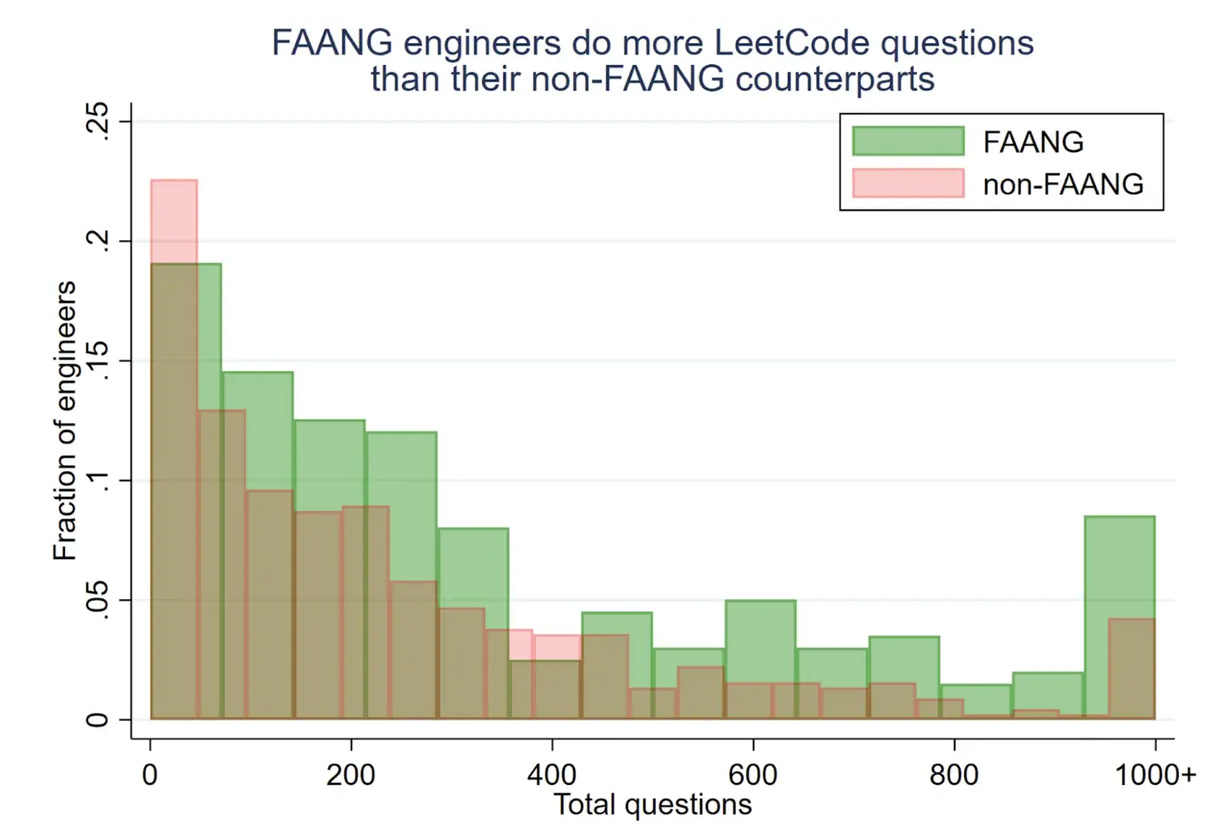Interviewing.io published How well do LeetCode ratings predict interview performance? Here's the data. This article states “there are seriously diminishing returns associated with doing more than 500 questions,” but the chart reveals an even lower pivot point.
If you aren’t interested in Tier 1 or FAANG-like roles, you don’t need leetcode at all, so let’s focus on the green bars. On second thought, 500 is a suspect pivot point in the green series. The bar over 600 is higher, indicating higher efficiency, and 500 is just after the 400 interval, which is a particularly low fraction of FAANG engineers.
The bars aren’t precisely marked, so exact cutoffs are a bit of a guess, but let’s say the range including 400 begins at 350. If we accept this range, no range is inferior until the 800 point on the total question axis!
If you are willing to tolerate the low around 400 because a higher bar obtains around 450-500, you would likewise want to accept the following two-bar series from 500 to 650, because those bars are strictly better than the prior two.
Granted, the whole four-bar run from 350 to 650 accounts for a notably lower fraction of FAANG engineers than the run from 0 to 350. By my estimation from the graph, about 65% of FAANG engineers have completed less than 350 problems, and about 55% have completed less than 300. This means 300 problems accounts for a better proportion than the following unbounded set, so it will certainly be more proportionally efficient. The run from 350 to 800 seems to account for about 20% of FAANG engineers. This would mean you could more than double your effort from 350 to 800 problems and only improve your odds from 65% to 85%.
Granted this is based on eyeball estimation from the interviewing.io graph, and granted that some people may value FAANG so much that the extra 20% is worth the effort, or perhaps they just enjoy leetcode. All that granted, the original logic from interviewing.io themselves was that most people would want to practice up to the point of significant decrease in marginal efficiency. That point looks to me like 350 rather than 500.
Coincidentally, Ladderly’s Leetcode Tool includes 349 problems from variety of reputable sources including the Neetcode 250, Grind 75, and others.
The 349 above won’t be the final list that I recommend. Interviewing.io convincingly argues that engineers need to ensure a high proportion of hard problems, and the 349 hasn’t been audited or balanced for this, but it’s already strictly better than any other standard problem set recommendation that I’ve seen, so check it out and subscribe to hear about the forthcoming set of some size in the range 350-400. It will raise the bar on the 349 in at least three ways:
Larger volume
Larger share of hard problems
Ensure multiple-problem reinforcement across patterns


